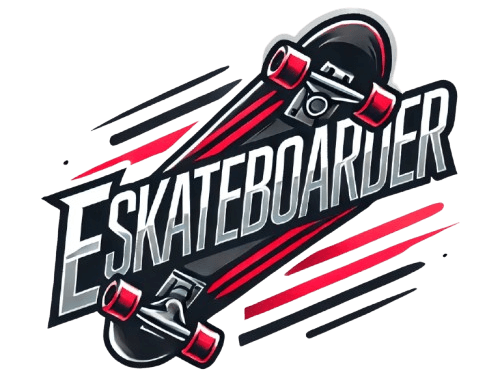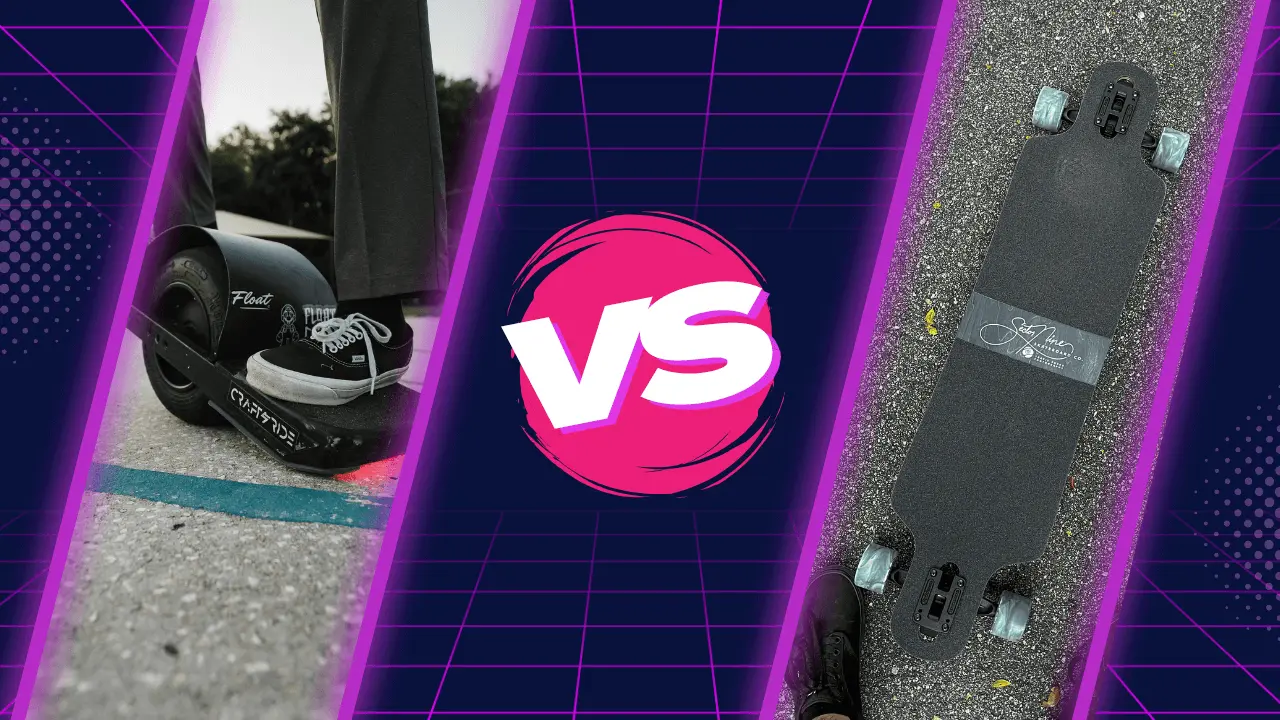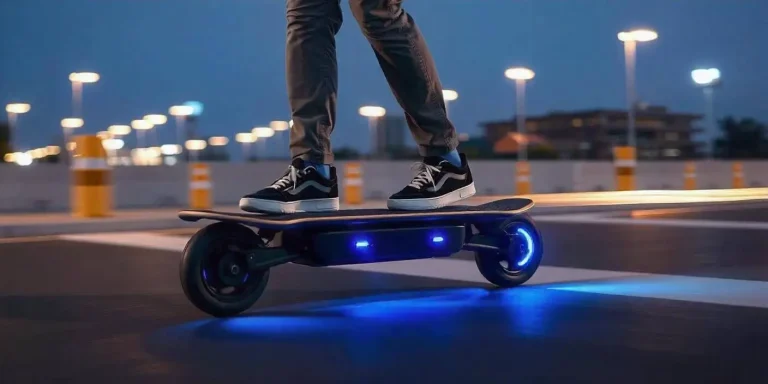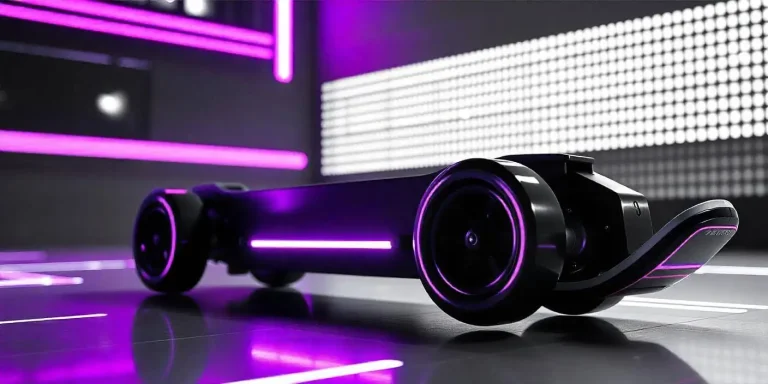Onewheel vs Electric Skateboard Comparison 2025
The growth of electric transportation has significantly altered urban mobility, with Onewheel and electric skateboards being leading options in the current market. With the use of these futuristic devices, electric transportation becomes something more than a utility; it becomes an experience. It would be best to put some thought into whether you want a fun way to meander through your community or a fuss-free mode of commuting, as these options may extend your decision-making process.
Now, with this article, we will proceed to help you reach an informed decision by outlining the differences between the Onewheel and Electric Skateboard in terms of their performance, usability, pricing, and utility. So, let’s kick things off by understanding each of these electric rides in detail.
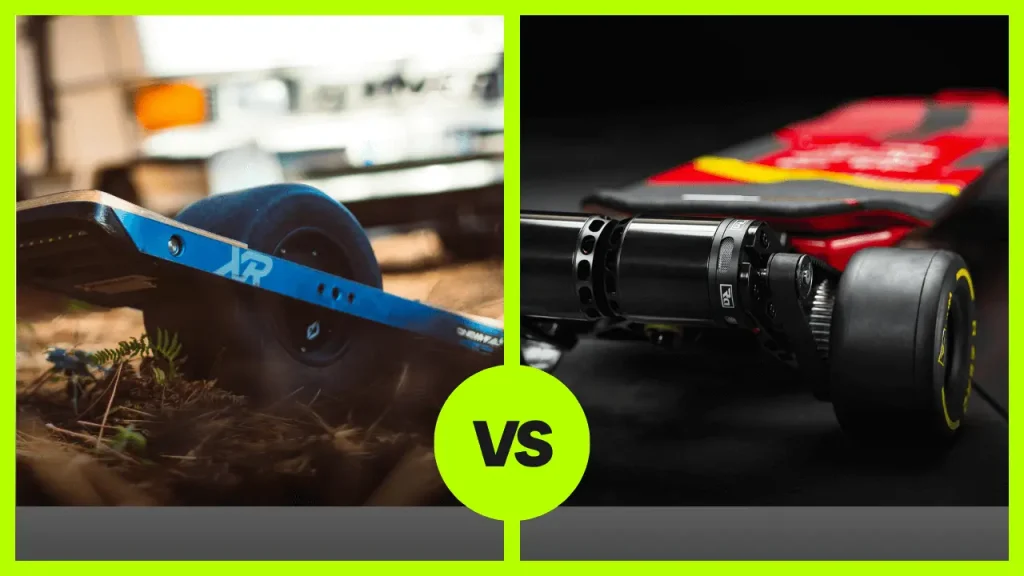
What Is an Onewheel?
An Onewheel is an electric board with a single large wheel positioned in the centre. It was created by Future Motion and is highly unconventional compared to traditional skateboards. Instead of four wheels, the Onewheel uses a single, large, central tyre powered by an electric motor.
The ride is controlled by shifting your weight, like on a snowboard. The Onewheel’s technology allows it to handle different terrains with ease, whether you’re gliding across pavement or tackling dirt trails. The design provides a more surf-like experience than an electric skateboard, making it a popular choice for riders looking for an adventurous ride.
What Is an Electric Skateboard?
An electric skateboard is a conventional skateboard equipped with an electric motor and batteries to provide propulsion. The engine is usually mounted either inside the wheels or within the deck. Riders control the board using a wireless handheld remote to quickly accelerate, decelerate, and brake.
Electric skateboards are designed for street use and have become a top choice for urban commuters. The increase of electric skateboards has led to the production of many different models with varying motor strength, wheel size, and battery strength for the riders to choose from.
Key Differences Between Onewheel and Electric Skateboard
The Onewheel and electric skateboard may be electric vehicles, but their design, performance, and experience differ. To get a better understanding, let’s highlight the key differences:
- Design: The most obvious difference is in the design. An Onewheel has one large central wheel and is more akin to a hoverboard or snowboard. In contrast, an electric skateboard has four wheels, and its design resembles a traditional skateboard.
- Riding Mechanism: The Onewheel requires the rider to balance on a single wheel, similar to surfing or snowboarding. At the same time, the electric skateboard is steered by shifting weight and using a handheld remote control.
- Riding Experience: The Onewheel delivers a smoother, more balanced ride over various terrains, while electric skateboards tend to perform better on smooth pavement but can struggle on rougher ground.
- Speed: Electric skateboards generally have a higher top speed, which can appeal to thrill-seekers. On wheels, however, are slightly slower but can handle rougher terrain more efficiently.
Performance: Speed, Range, and Power
Lithium-ion batteries and electric motors power the Onewheel and electric skateboard, but their performance characteristics differ based on design and intended use.
- Onewheel: Typically, Onewheels offer a top speed of around 20 mph (32 km/h) and can travel between 6 and 18 miles on a single charge, depending on the model. The Onewheel XR, for example, has a 12-18-mile range, while the Onewheel Pint has a range of 6-8 miles.
- Electric Skateboard: Electric skateboards usually have a higher top speed, ranging from 20 mph to 30 mph, depending on the model. The range can vary from 7 miles to as much as 30 miles, depending on the size of the battery and the motor power.
Both vehicles are equipped with regenerative braking, which helps conserve battery life and improve the overall range.
Riding Experience: Control and Comfort
Regarding riding experience, the Onewheel and electric skateboard cater to different preferences.
- Onewheel: The Onewheel is built for a unique, surfing-like experience. Since it has one wheel, riders must balance on the device, much like on a snowboard or surfboard. This can feel unstable at first but becomes second nature with practice. Riders often report a more comfortable and “floaty” feel, especially on rough terrain.
- Electric Skateboard: Riding an electric skateboard is more intuitive for those familiar with traditional skateboarding. The remote control makes it easy to accelerate, decelerate, and brake, and the stability provided by the four wheels offers more control, especially for beginners.
Design and Aesthetics: What Looks Better?
When choosing between the two, aesthetics and design play a role in decision-making. The Onewheel has a futuristic design with a sleek, single large wheel that gives it an almost sci-fi appearance. Its unique design stands out, making it an eye-catching vehicle.
However, electric skateboards are usually designed in a way that resembles conventional skateboards, but the advanced designs currently on the market exhibit high technology elements. The board’s design is sleek and streamlined, with various colours and styles.
Price Comparison: Onewheel vs Electric Skateboard
Both devices can be quite expensive, but Onewheel models tend to have a higher price tag than many electric skateboards.
- Onewheel: Prices range from $950 for the Onewheel Pint to $1,800 for the more powerful Onewheel XR.
- Electric Skateboard: An electric skateboard can range from $300 for entry-level models to $1,500 or more for high-end performance boards.
While Onewheels are generally more expensive, they may justify the cost for riders who want a more adventurous, off-road-ready experience.
Safety Features in Onewheel and Electric Skateboards
Both vehicles come with essential safety features, but they differ in the way safety is implemented:
- Onewheel: Since the Onewheel has one wheel, balance is key. The device often includes features like pushback, which warns the rider when reaching the board’s maximum speed, helping prevent accidents. The larger tyre and lower centre of gravity can provide better stability.
- Electric Skateboard: Electric skateboards often feature safety features like regenerative braking, and remote control functions that allow the rider to slow down gradually. However, since the rider has to balance with a remote control, there is a higher likelihood of losing power in certain situations.
Terrain Handling: Which One Works Best?
When it comes to terrain handling, Onewheel shines. Its single-wheel design efficiently handles various terrains, including grass, dirt, sand, and even snow.Due to its capability of absorbing irregularities and delivering greater comfort on rough terrains, off-roading is made easier.In comparison, electric skateboards are typically designed for smooth, paved surfaces. While there are all-terrain models, they generally perform better on sidewalks, streets, and other flat surfaces.
Learning Curve: Which Is Easier to Ride?
If you’re a beginner, the electric skateboard might feel easier to learn. The four wheels provide stability, and the remote control allows for more precise control, especially when starting and stopping. For experts who already comprehends skateboarding, this may seem to be even more straightforward.
The Onewheel, however, requires a steeper learning curve. Balancing on a single wheel can feel challenging at first, especially for those new to this type of ride. However, with practice, riders often report that the experience becomes natural, and they can even master tricks and advanced riding techniques.
Portability: Which Is More Convenient?
When it comes to portability, the electric skateboard wins. Most electric skateboards are lightweight and easy to carry, especially when compared to the bulkier Onewheel. Due to the Onewheel’s large wheel and heavy frame design, it is somewhat difficult to transport and may necessitate a strap or bag for ease of carrying.
Maintenance and Durability: Longevity of Your Ride
Both the Onewheel and electric skateboard require regular maintenance, such as checking the battery, tyres, and motor. However, the Onewheel may require more care due to its large wheel, which can wear down more quickly, mainly when used on rough terrain.
Community and Culture: The Onewheel vs Electric Skateboard Lifestyle
The Onewheel and electric skateboard communities are both active and passionate. The Onewheel is often associated with a more adventurous, surf-inspired lifestyle, while the electric skateboard community tends to be younger and more urban-oriented, with a focus on commuting and street riding.
Environmental Impact: Which Is More Eco-Friendly?
Both the Onewheel and electric skateboard are eco-friendly alternatives to traditional vehicles, emitting no CO2 during use. Although the production process of Onewheel may become more environmentally damaging, in the long run, its bigger motor and battery may consume more resources.
Customization: Personalizing Your Ride
Both the Onewheel and electric skateboard offer options for customization, from stickers and paint jobs to aftermarket accessories like grips and lights. However, the Onewheel tends to offer more customization options for the wheels and suspension system.
Is Onewheel Better for Beginners?
While the Onewheel offers a unique riding experience, it’s generally not recommended for beginners due to the steep learning curve. New riders will likely find an electric skateboard easier to master, especially with its familiar four-wheel design.
The Best Terrain for Onewheel vs Electric Skateboard
If you plan to ride on rough terrain, the Onewheel is your best bet, as its larger tyre and single-wheel design make it ideal for dirt, gravel, and even snow. Electric skateboards are best suited for smooth pavement, though some models can handle light off-road conditions.
Which Is Better for Commuting?
For commuting, the electric skateboard is generally the better choice. Its lightweight design and the convenience of carrying it on public transport make it a practical option for short city commutes. The Onewheel, while fun and capable of tackling more terrain, is bulkier and may be less practical for daily commuting.
Speed and Agility: Which One Wins?
When it comes to speed and agility, the electric skateboard wins. With faster speeds and better manoeuvrability on paved surfaces, electric skateboards are more suited for those looking for a quick, efficient way to get around.
Long-Term Investment: Onewheel or Electric Skateboard?
Both vehicles are a long-term investment, but if you plan to use your device primarily for commuting or city travel, the electric skateboard offers more value for money. If you’re an off-road enthusiast, however, the Onewheel may be a better choice.
Common Misconceptions About Onewheel vs Electric Skateboard
There are many misconceptions about both vehicles. One common myth is that One wheels are difficult to control. While they have a steeper learning curve, they are not inherently more difficult to ride once you get the hang of them. Similarly, electric skateboards are not just for skateboarders; they can be easy for beginners to pick up as well.
Conclusion: Onewheel vs Electric Skateboard – Which Is Right for You?
Choosing between an Onewheel and an electric skateboard depends on your preferences and needs. The Onewheel is a great option for anyone who is considering having fun on various types of terrains. However, for anyone looking for something to glide smoothly on or commuting purposes, the electric skateboard is a good substitute. Both of these options have their positives and negatives so, the effect one has to choose the best for oneself depends on one’s riding style, budget, and lifestyle.
FAQs About Onewheel and Electric Skateboards
Which is easier to learn: Onewheel or electric skateboard?
The electric skateboard is generally easier to understand due to its stability and use of a remote control.
Is an Onewheel suitable for beginners?
While there is a learning curve, beginners can still learn to ride the Onewheel with practice.
Can I ride a Onewheel on rough terrain?
Yes, the Onewheel is designed to handle rough and uneven terrains, including dirt, gravel, and snow.
How fast do electric skateboards go?
Electric skateboards typically reach speeds of 20-30 mph, depending on the model.
Are Onewheels worth the investment?
Onewheels are great for off-road enthusiasts and those seeking a unique riding experience, making them worth the investment for some.
Which is better for commuting, Onewheel or electric skateboard?
Electric skateboards are the ideal mode of transport for travelling to the workplace or school owing to their ease of use and lack of bulkiness.
Final Thoughts
Deciding between a Onewheel and an electric skateboard isn’t only determined by their speed and look, but rather on which vehicle would be suitable for your form of life. Whether you go for the off-road versatility of the Onewheel or the practicality of the electric skateboard, both offer an exciting new way to travel.
